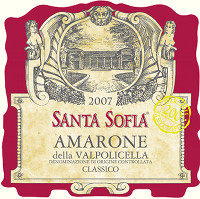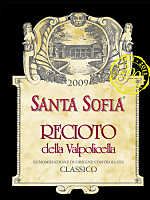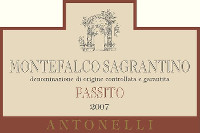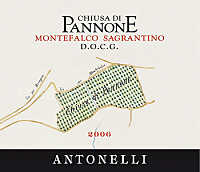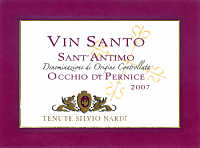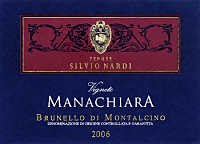|
Wine is the result of many factors, the union of many interactions between man
and Nature, fundamentally realized in the vineyard and then with the processing
of its fruits. Vine, just like any other plant having its roots in the soil,
establishes a fundamental bond which will determine its life cycle. The bond with
the environment, as a matter of fact, it is not something concerning plants
only: every living being - including man - is influenced by the factors of the
environment, both natural and artificial of the context in which it lives in.
These factors strongly influence growth and development, expression and
everything associated to the result of the interaction and the combination of
these conditions. Specifically applied to the vine, environmental conditions and
factors interact with its expression - to which it is added, unavoidably, the
work of man - and they influence, in a substantial way, both quality as well as
organoleptic and sensorial characteristics of wine.
The influence of environmental conditions on wine is always subject of research
as well as endless debates and suppositions, praises and demerits, not always
provable in an objective way. From the moment man has, like to say, discovered
wine - as an enjoyable and pleasing product, result of the control of grape
juice fermentation - have being written countless pages, all trying to prove and
support the quality of certain wines produced in specific areas. Since the
beginning of civilization, from the moment of the invention of writing, up to
our days, every era and every epoch had - and continues to have - literary works
and written documents dedicated to wine, in which, unavoidably, are accounted
the qualities of wines produced in every territory. If it is true that,
sometimes, the best wines correspond to those produced in the areas where the
author was born or however has a connection, it is undeniable both territory and
environment strongly influence wine.
Factors determining the uniqueness of the production of a wine, of a specific
wine produced in a specific territory, are generally defined with the French
term terroir. A word having a difficult translation, as it does not have
a direct equivalence with English language, terroir can be defined as the
set of the conditions occurring and interacting in a specific geographic zone,
generally having a quite limited area, conditions of natural and “spontaneous”
origin, as well as of “human” origin. French use the term terroir to
refer to all those products result of the uniqueness of a territory, which can
be defined as local or territorial. The term terroir,
despite it is frequently referred to wine, is however used for every
agricultural product, considered as the result of the fundamental and strong
bond between man and Nature, a condition, unique and unrepeatable, existing in a
specific place.
The conditions defining terroir are many. Among the main factors are
mentioned natural and environmental conditions of the place, chemical and
physical characteristics of the soil, meteorological and climate conditions,
position of the vineyard - therefore exposure and altitude - influence of local
meteorological factors, including wind, temperature and humidity. The concept of
terroir is never referred to a wide area, it is generally referred to a
single vineyard of the estate. This geographical limitation has an evident
correspondence to reality: two wines produced with the same grapes, even by the
same producer, but cultivated in vineyards distant few tens of meters one from
each other, express in the glass unique and distinct sensorial and organoleptic
qualities. In other words, the concept of terroir is the clear opposition
to standardization, by recognizing the uniqueness and specific qualities of
conditions occurring in each part of the territory.
|
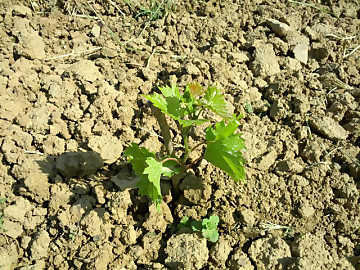 | |
| A young vine: a strong bond with the
soil which will be expressed by its wines | |
|
To these factors given by Nature to every single territory, are added the
unavoidable intervention of man and how he interacts with local factors, by
limiting, as much as possible, every condition of corruption. Every agricultural
and viticultural intervention done by man on the environment, in this sense also
including every wine making practice, ideally move the wine away from the
authentic and genuine expression of terroir. This does not mean, in any
case, man should completely delegate the expressive role to Nature, because - it
should be noted - wine does not exist in Nature and its production unavoidably
requires the work of man. The intervention and talent of man in fact plays the
fundamental role of control and verification of every viticultural and wine
making process, in order to ensure a genuine and sound product, with no faults
which could compromise the objective quality of wine.
On this regard, it is unacceptable to justify the presence of faults in a wine
by supporting the fact it is the expression of terroir: besides being
unfair and dishonest, it proves - with no excuse - the incapability of man to
rightly interpret and respect terroir. What has been just said must not
be misunderstood. The intervention of man must not be excessively corrective and
invasive, by using practices and techniques which can compromise the expression
of grapes and territory, only for preventing the presence of faults. In this
sense, every wine of industrial or technological origin represents
the total denying of the terroir concept. The role of man - by using his
intelligence, culture and talent - must therefore play the role of
“guarantor”, by helping the terroir conditions to reach their full
quality expression, including the unavoidable limits of the territory, of grapes
and everything representing and making a terroir.
Every terroir has both positive and negative characteristics, factors
which must be evaluated according to grape varieties cultivated in the
territory. Every grape variety, in fact, produces quite different results,
sometimes even opposite, according to the place where it is being cultivated and
in function of viticultural and wine making conditions. For example, a wine
produced with Merlot grape - which generally gives wines with intense colors and
appreciable roundness - cultivated in a soil rich in clay and in a warm climate,
will give a wine evidently more robust and rich than the one produced with the
same grape cultivated in a soil rich in sand and in a cold climate. In the
latter case, man must not exasperate the condition of terroir by using
excessive procedures, both in viticultural and in wine making terms, in order to
get a wine completely extraneous from the nature of the place, by trying to
overcome the specific limits of the terroir. Terroir is, first of
all, understanding and respect for a place and its grapes, therefore, its wines
and, very important, aimed to the promotion of their quality and with no faults.
For the sake of truth, in the course of the years, the intervention of man has
however affected the expression of terroir, by introducing - sometimes as
a need - indispensable elements for the survival and the adaptation of vine. For
example, we can think about what happened at the end of the 1800s, when
viticulture in Europa faced what can be considered the most fearful event in the
whole history of wine: phylloxera. Among the elements making terroir,
vine represents - undeniably - the fundamental and indispensable element
allowing its expression. Vine, as it is commonly known, and just like every
other plant, gets nourishment, and therefore survival, through its roots well
established in the deep of the soil. Phylloxera, by attacking the roots of vine,
causes its death. The damages caused by phylloxera with its arrival to Europe
has been dramatic, as to menace the extinction of the Vitis Vinifera in the Old
World. The proposed solution, used still today, was to replace the original
rootstocks of European varieties with the ones of American vines, which are
resistant to phylloxera.
The solution has been indispensable, however there has always been the doubt on
how much having grafted European varieties on rootstocks of American vines, has
altered, not only the life cycle of the vine, but also the quality and potential
of wines. Moreover, the practice of grafting American rootstocks on European
wine vines, had - and continues to have - a strong activity of research in order
to find the best rootstocks, appropriate and efficient for every type of grape
and for every territory and soil. In fact, at the moment of planting a new
vineyard, the choice is not made on the grape variety only, but also on the type
of rootstock. This does mean the same variety, grafted on different rootstocks,
produces different enological results, as every type of rootstock has proper and
specific characteristics and capacity of supplying water and nutrients.
Among the elements making the terroir we in fact find the composition of
soil, the supplying of water, availability of mineral and organic substances.
The choice of rootstocks therefore determines the way these factors are being
absorbed and used by the vine, therefore, also the full expression of
terroir can be altered. Let's consider, for example, two vines belonging
to the same variety and same clone, planted in the same vineyard, one near the
other, but having a different rootstock: the grapes produced by the vines will
have different qualities and characteristics, therefore, making different wines.
Another element introduced by man and which certainly influence wine, is the use
of the so called selected yeast. Yeast is naturally found on the skin of grapes
and - it should be noticed - not all of them are useful and positive for the
quality of fermentation. In every terroir are found different strains and
varieties of yeast, both positive and negative ones for a proper fermentation.
The use of selected yeast gives the wine standardized qualities, by
literally overwhelming the typical yeast found in a terroir. The initial
job of selected yeast - generally being very efficient and present in a dominant
quantity - produces the overwhelming of the least efficient strains or of those
which usually produces substances which could compromise the organoleptic
finesse of wine. For the sake of truth, selected yeast are constituted by
Saccharomyces Cerevisiae only, however and naturally found in the yeast
strains found in the air and on grape skins. We are not saying, of course, the
yeast naturally found in every terroir, and contributing to the
definition of a wine character, is negative for the quality of fermentation. It
is however undeniable many of them, sometimes being completely unknown and
scarcely controllable, can cause negative effects on fermentation, sometimes not
allowing the completion of the process as well, a condition which must not be
confused with the concept of terroir and its expression.
Terroir is a concept having valiant and passionate supporters, whereas
for others - it should be said, a minority - it is an element excessively
overestimated in the production of wine. Sensorial tasting proves the validity
of the terroir concept, as the evaluation of wines having similar
characteristics according to a viticultural and enological point of view, but
produced in different territories, even geographically close one to each other,
have substantial organoleptic and sensorial differences. The culture of
terroir is particularly strong and supported in France, where producers -
proud of their territorial identity - see in this element the characters of
uniqueness of their wines. From France the concept of terroir spread in
every country of the world, in particular in those where they are trying to
revaluate the territorial diversity and the heritage of local grapes, such as
Italy.
|


